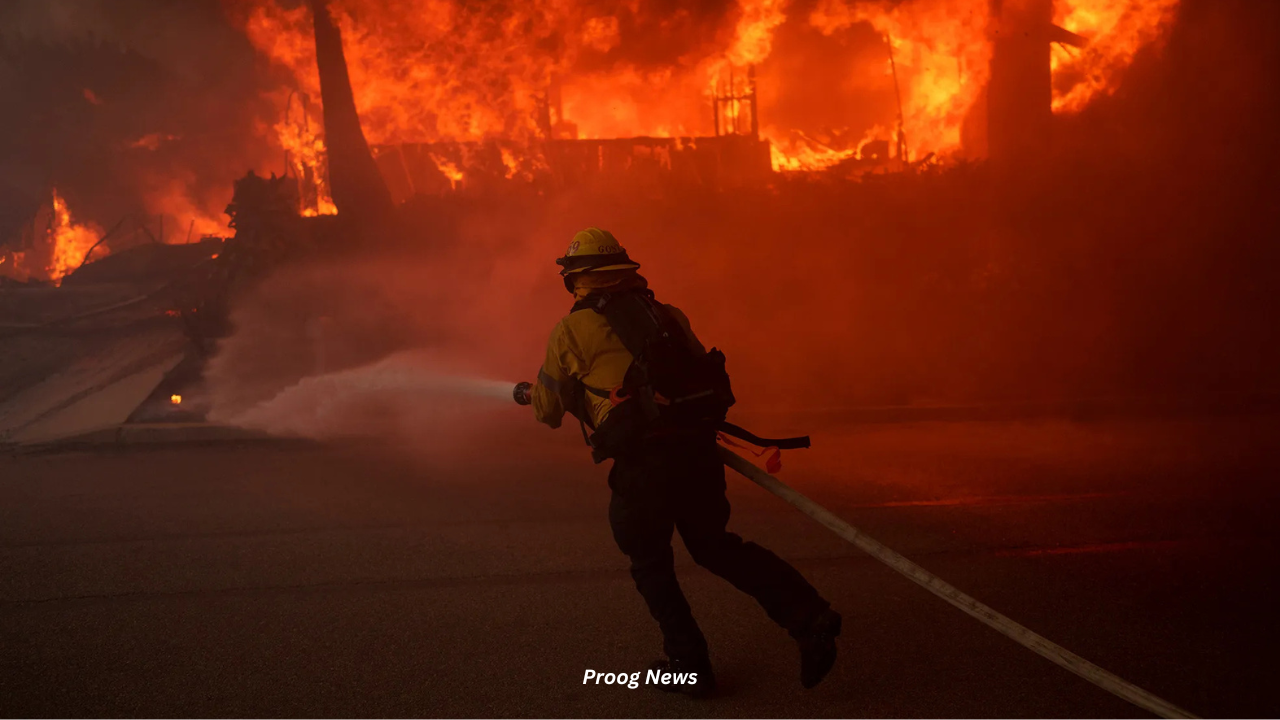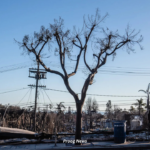As climate change makes the Earth warmer, wildfires have become so extreme and hard to predict that new words have been made up to describe them, like firenado, gigafire, fire siege, and even fire pandemic. It is 78 more “fire days” in California each year than it was 50 years ago. These are days when conditions are perfect for fires to start. When is the fire season in California? Since droughts happen all year, it’s now all year.
Things are not the same as they were. Where in California do the worst fires happen? Everywhere. Some Californians felt safe because they had never had a fire in their neighborhood, but NIMBYism doesn’t work in most places anymore.
This time it’s Los Angeles County. The Palisades Fire started along the coast in Los Angeles on Tuesday morning and spread quickly. It was pushed along by strong Santa Ana winds, which destroyed homes and forced about 10,000 families to leave their homes. Within a few hours, the Eaton Fire broke out to the northeast in Altadena, in the foothills of the San Gabriel Mountains, with wind gusts of almost 100 mph. There was then a third fire in Los Angeles County late Tuesday night in the San Fernando Valley area of Sylmar. By Wednesday morning, there was a fourth fire in the Sepulveda Basin.
Fire officials said that the Eaton Fire destroyed more than 1,000 homes in Pacific Palisades alone and hurt many others. Five people died in the fire. There are smoke advisories for almost the whole county. Southern California as a whole is in a drought because it hasn’t rained much since July.
Southern California’s coastal fires need desert winds to spread. But not anymore. Along the coast, where it usually rains, the plants are often so dry that they don’t need winds to spread fires.
Also, California’s so-called “asbestos forests” in the far north are no longer safe. Huge fires tore through dense, wet rainforests where climate change had pushed away the fog and mist that normally protected the area.
What makes California’s wildfires happen? The main causes are fires and power lines. Utilities aren’t doing enough to stop fires, according to an audit from 2022. Lightning-caused fires, like the one in Big Basin Park, are a fairly new trend, though. Unpredictable lightning storms with tens of thousands of strikes over the course of a few days hit areas that are already dry and weak. As the Earth warms up, scientists say we can expect more lightning. Also, more than 163 million trees have been killed by insects or drought, which has made the damage worse.
Fighting these bigger, more stubborn California wildfires has become harder, scarier, and more deadly, putting extra stress on the state’s already overworked firefighters.
And it costs a lot more. The Legislative Analyst’s Office came up with this sobering number: CalFire gets about $3.7 billion a year, up from $800 million in 2005-2006. This money goes to fire prevention, resource management, and fire protection.
Even if homeowners make their homes more fire-resistant, their insurance companies are still canceling their policies as the damage and costs rise.
More attention is being paid to the unhealthy smoke that hangs around neighborhoods. Even California’s crops are being hurt. There are worries that the smoke will taint the grape harvest, which would hurt the state’s $58 billion wine industry.
California’s landscape changed because of fire. Now it’s up to the people who live there to get used to the new reality.






